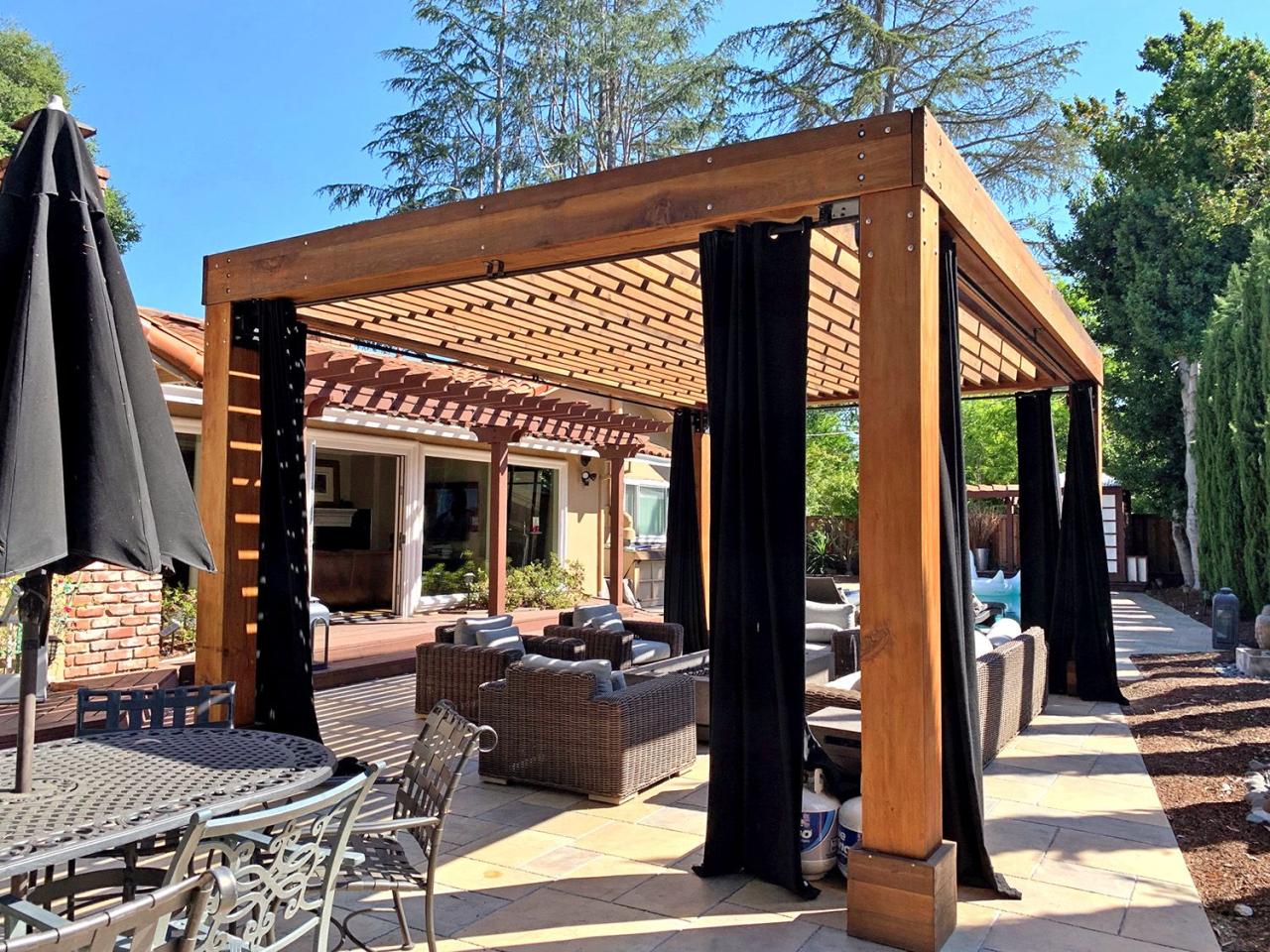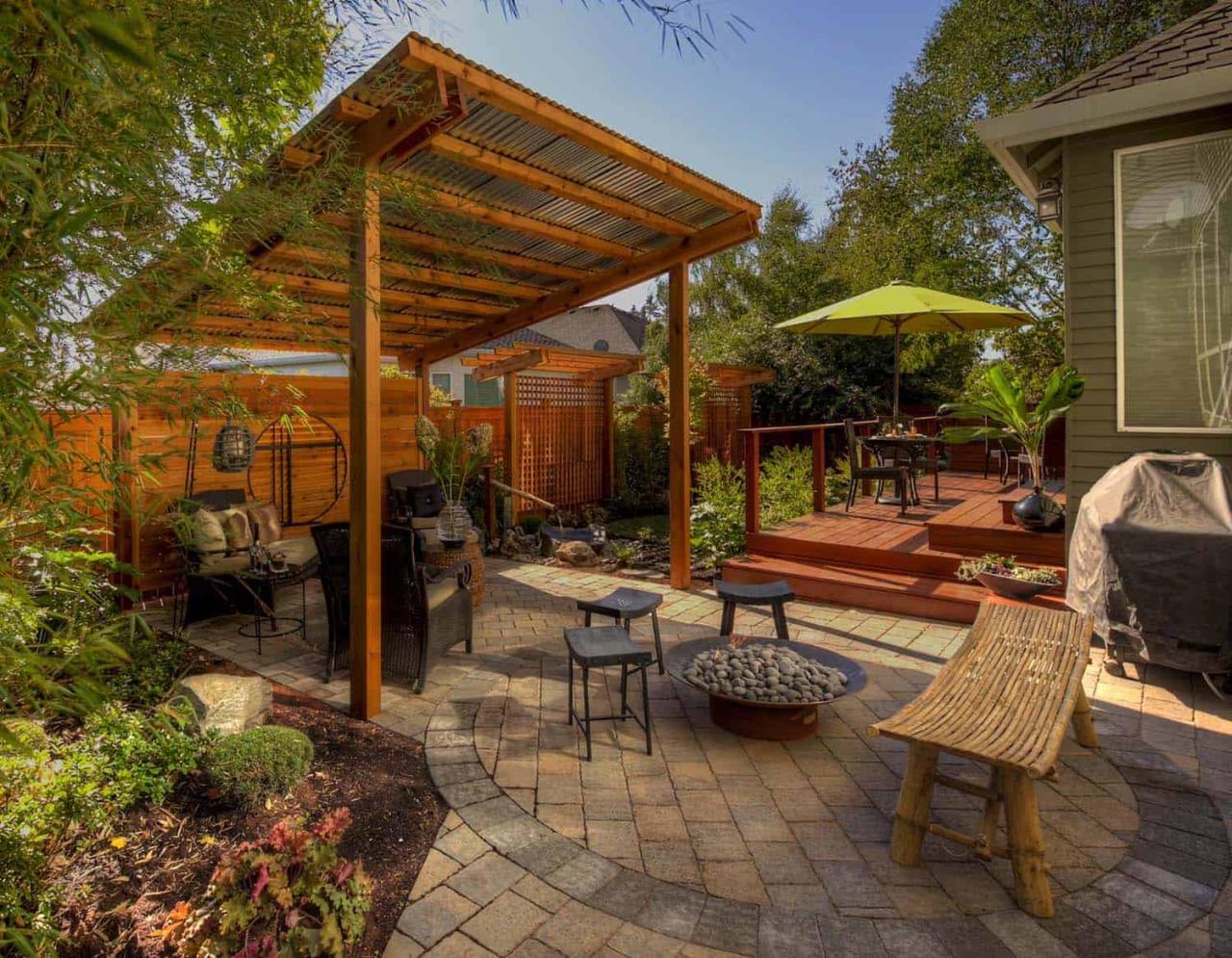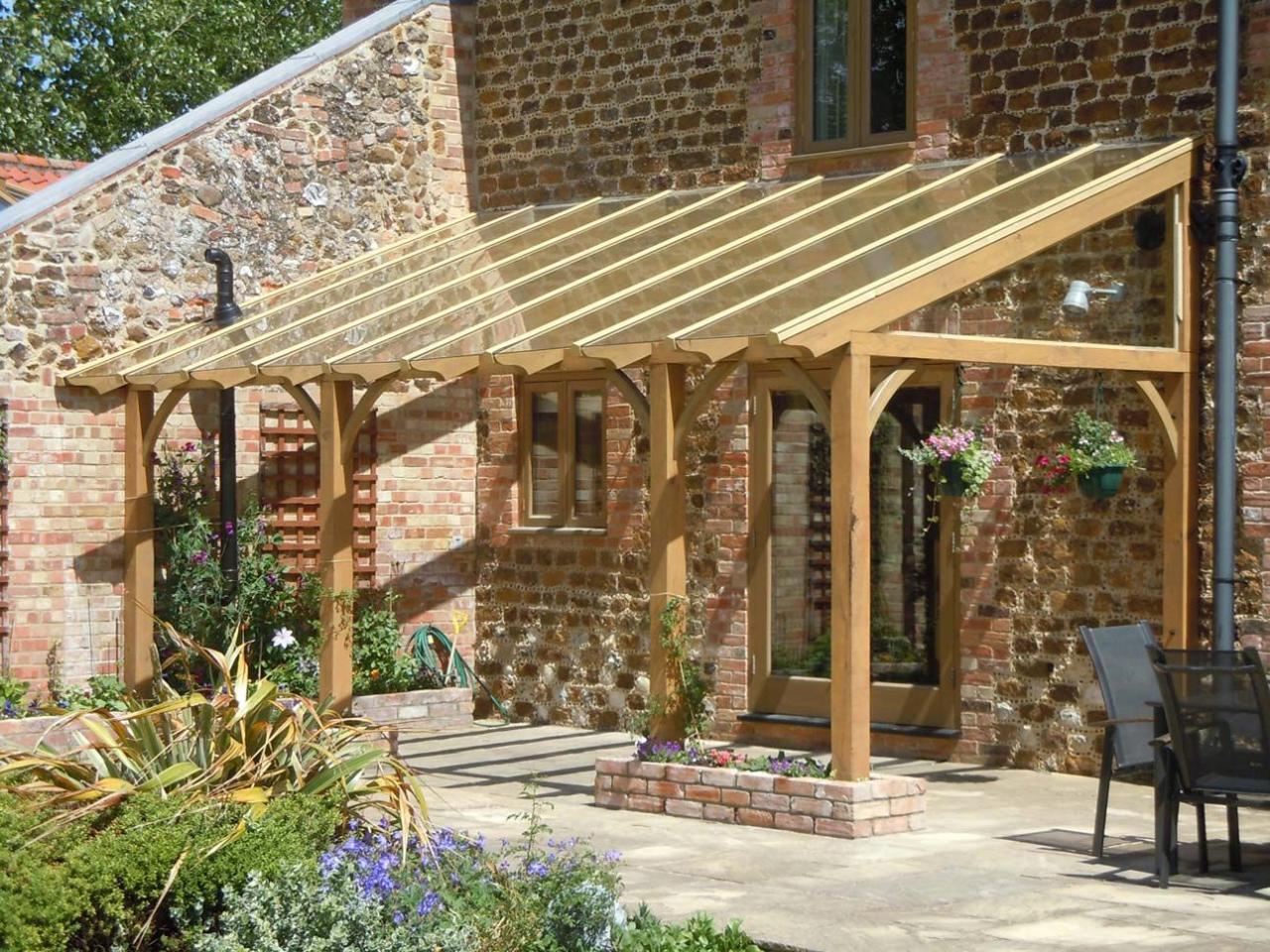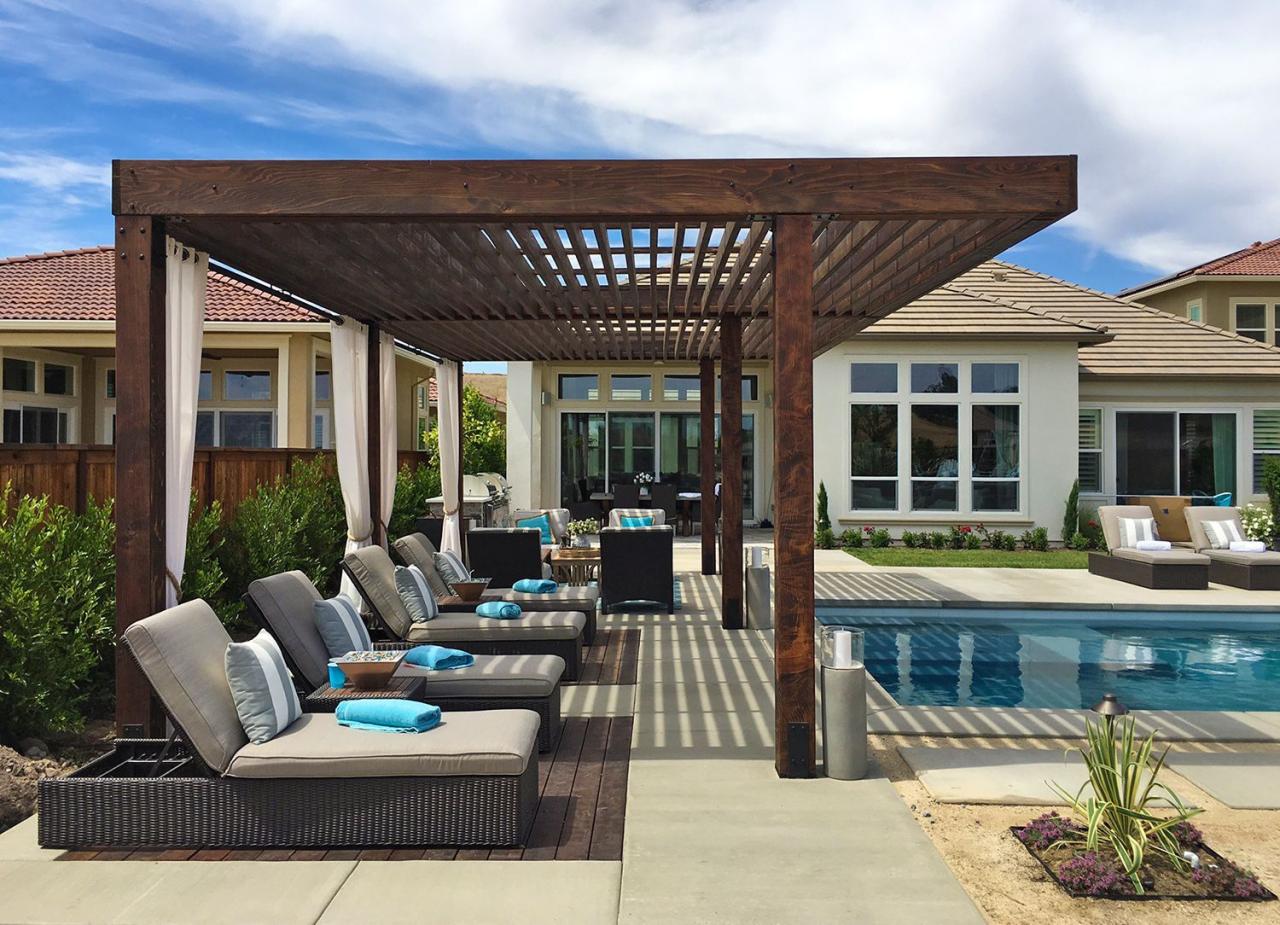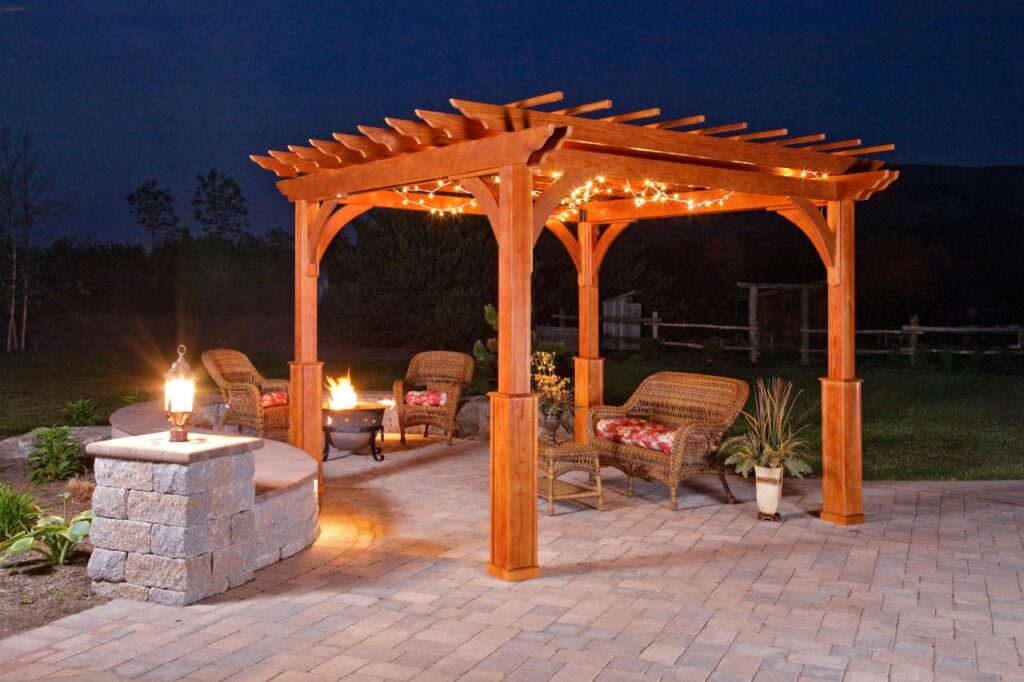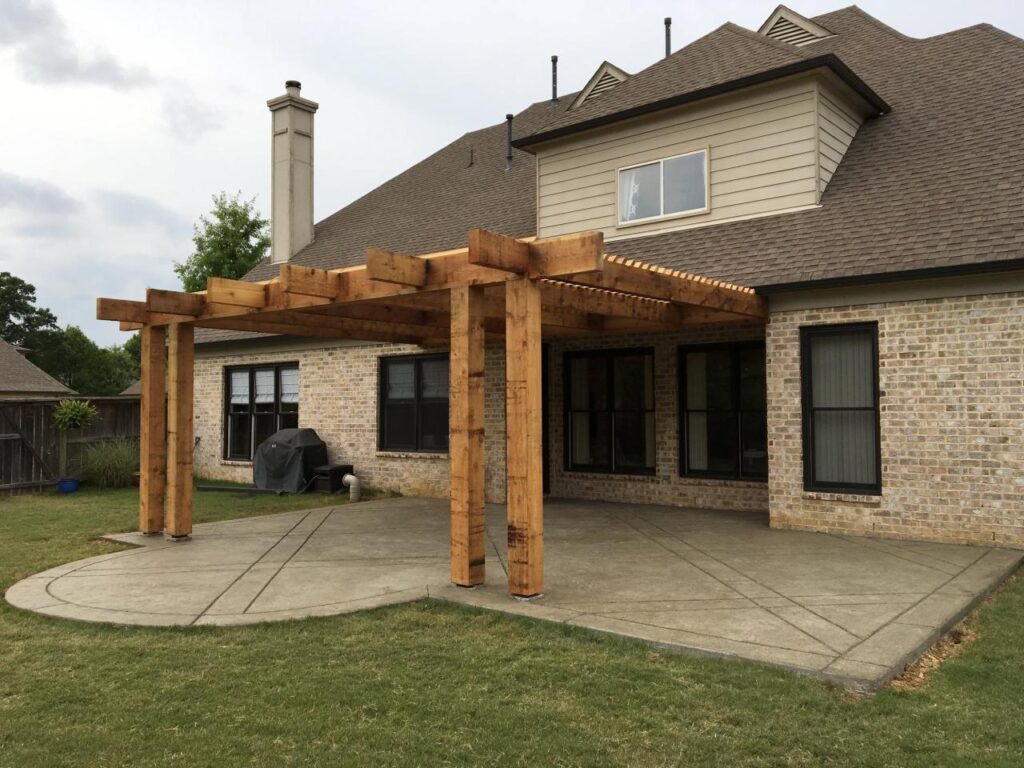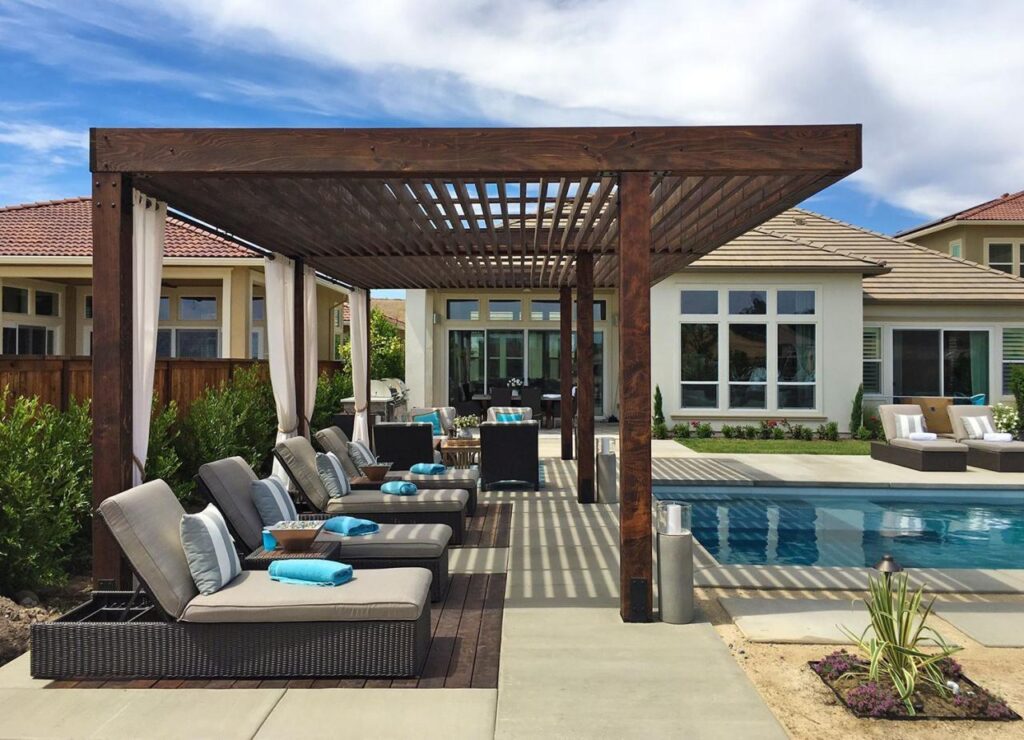Wooden pergola with roof – Wooden pergolas with roofs offer a charming and functional addition to any outdoor space, providing shade, shelter, and a touch of architectural elegance. This guide will delve into the design considerations, materials, construction techniques, maintenance tips, and inspiring examples of wooden pergolas with roofs, empowering you to create an enchanting outdoor oasis.
From selecting the perfect design to ensuring longevity through proper care, this comprehensive resource will equip you with the knowledge and inspiration to elevate your backyard or garden with a beautiful and practical wooden pergola with a roof.
Introduction: Wooden Pergola With Roof
A wooden pergola with a roof is a versatile structure that can provide shade, shelter, and visual appeal to your outdoor space. Pergolas are typically made of wood or metal and can be either freestanding or attached to a building.
Wooden pergolas with roofs provide a charming and functional outdoor space, offering shelter from the elements while adding a touch of elegance to your backyard. Whether you’re looking to create a shaded seating area or an outdoor dining room, a pergola is an excellent choice.
Pergola s come in a variety of styles and materials, so you can find one that perfectly complements your home’s architecture and your personal taste. A wooden pergola with a roof is a particularly popular option, as it provides both durability and a classic aesthetic.
There are many different types of wooden pergolas with roofs to choose from, so you can find one that fits your specific needs and style. Some popular options include:
Types of Wooden Pergolas with Roofs
- Gable pergolas have a peaked roof that resembles a gable roof on a house. This type of pergola is ideal for creating a covered outdoor living space.
- Hip pergolas have a roof that slopes down on all four sides. This type of pergola is more visually appealing than a gable pergola, but it is also more difficult to build.
- Flat pergolas have a roof that is flat. This type of pergola is the easiest to build, but it does not provide as much shade as a gable or hip pergola.
Design Considerations
When designing a wooden pergola with a roof, there are several factors to consider to ensure it meets your specific needs and complements your outdoor space. These factors include the size, shape, and materials used in its construction.
The size of the pergola should be proportionate to the area where it will be placed. A large pergola in a small space can feel overwhelming, while a small pergola in a large space may look out of place. Consider the intended use of the pergola and the number of people it will need to accommodate.
Wooden pergolas with roofs provide ample shade and enhance outdoor living spaces. However, over time, the canopy may deteriorate, requiring pergola canopy replacement. This involves removing the old canopy and installing a new one, which can restore the pergola’s functionality and aesthetics.
By replacing the canopy, you can extend the life of your wooden pergola with roof, ensuring it continues to be a focal point of your outdoor oasis.
Shape, Wooden pergola with roof
The shape of the pergola can vary depending on your personal preferences and the architectural style of your home. Common shapes include rectangular, square, and octagonal. A rectangular pergola is a versatile choice that can fit into most spaces, while a square pergola provides a more intimate setting. An octagonal pergola adds a touch of elegance and can create a focal point in your yard.
Materials
The materials used to build the pergola will impact its durability, appearance, and cost. Cedar and redwood are popular choices for wooden pergolas due to their natural resistance to rot and decay. Pressure-treated lumber is another option that is more affordable but may not last as long. Vinyl and aluminum are also low-maintenance options that can provide a modern look.
Materials and Construction
The choice of wood for a wooden pergola with a roof depends on several factors, including durability, resistance to rot and decay, and appearance. Some commonly used types of wood include:
- Cedar: Known for its natural resistance to rot and decay, cedar is a popular choice for outdoor structures. It has a reddish-brown color that turns gray over time.
- Redwood: Similar to cedar, redwood is also resistant to rot and decay. It has a deep red color that darkens with age.
- Pressure-treated pine: This is a more affordable option that has been treated with chemicals to resist rot and decay. However, it may not be as durable as cedar or redwood.
The construction process for a wooden pergola with a roof typically involves the following steps:
- Laying out the posts: The first step is to lay out the posts for the pergola. The posts should be spaced evenly and set in concrete footings.
- Attaching the beams: The next step is to attach the beams to the posts. The beams will form the top of the pergola and support the roof.
- Installing the rafters: The rafters are then installed on top of the beams. The rafters will support the roofing material.
- Installing the roofing material: The final step is to install the roofing material. The roofing material can be made of a variety of materials, such as shingles, tiles, or metal.
The tools required for building a wooden pergola with a roof include:
- Circular saw
- Drill
- Hammer
- Level
- Measuring tape
Final Review
Incorporating a wooden pergola with a roof into your outdoor space not only enhances its aesthetic appeal but also creates a versatile and inviting area for relaxation, entertaining, or simply enjoying the beauty of nature. By following the guidelines Artikeld in this guide, you can design, construct, and maintain a wooden pergola with a roof that will provide years of enjoyment and become a cherished focal point of your outdoor sanctuary.
